#ust nstp
Explore tagged Tumblr posts
Text
random.02
andon pa din ako sa stage na. putangina wala pa din akong ipon! 36 na ko beshy.. puro ka lang yabang. ano na?
dami kong gustong gawin.. dami ko gustong bilhin.. dami kong gustong mapuntahan.. pero?? nasan ang pera ko??
ang tanga ko dahil nagsstay ako sa lugar na hindi ako masaya.. pero kaya ko naman mag tiis e.. dalawang taon na lang naman, siguro after 2 years maganda ganda na sahod ko.. ayoko kasi dumepende sa ibang tao.. gusto ko lahat pinaghihirapan ko. yung tipong pagdadaanan ko muna yung hirap para pag natikman ko na yung sarap, masasabi ko sa sarili ko na pinaghirapan ko to..
naiinis ako sa mga tao na nagsasabi sakin, ang tanga mo sinasayang mo oras mo diyan, edi kung nagtrabaho ka sa ganitong lugar edi ang dami mo na sanang ipon. o eh bakit di ikaw ang gumawa? bibilib pa ko kung nasa point na kong kinaiinggitan na kita dahil ang layo na ng narating mo. kaso wala eh. pano ako mamomotivate niyan??
ngayon naiisip ko, nung bata ako, pinilit ako mag take ng nursing ng mama ko, pero sabi niya ako daw may gusto non noon. hahaha so nag take ako siguro nga gusto ko yun nung time na yon kasi lahat ng classmates ko nung highschoo eh puro nursing. nakakatawa nga eh kasi sabay sa uso lang ako.. HAHAA nag take sila ng upcat pero ako pinagttake kaso di ko naman alam yun. HAHAHA! hndi ako nagtake kasi alam kong di ko kaya HAHAHA pang matalino lang yun HAHAHA
nagtake ako exam sa CEU at sa UST.. ayon. awa ng Diyos sa dami ng choices ko ng courses wala kahit isa pumasa HAHAHAHA and ending, dun ako nag aral sa school na gusto ni mama sa BGC hahaha yun ang unang nursing school sa BGC as far as i know.. hahaha kasi naalala ko nun wala pang mga malls dun, as in talahib pa lang ang kapaligiran at buhangin.. ganorn. so, nung time na yun nagkaron ako ng classmates na mayayaman.. taena bigtime tlga! HAHAHA tuwang tuwa ako kaya sabi ko sige enjoy ko nalang.. :D :D
tapos may mga times na tlgang nag aaral ako, nakapag disect pa nga ako ng palaka non. HAHA may mga subjects na napasa ko at halos lahat dun ay minor subjects HAHAHAHAHA nakakkatawa taena.
so ayun. kinuha ko nursing nag aral ako sa magandang school, tapos.. di ko kayang sabayan yung mga tao dun.. kasi alam nyo ba magkano lang baon ko non?? 100.. HAHAHA though grateful naman akong may baon akong 100.. pero di siya sapat para sakin.. kasi ang layo ng school ko.. ilang sakay, papunta pabalik.. tapos nakakahiya man aminin pero ang binibili ko sa school non, kanin lang tapos yung sabaw dinadamihan ko kasi libre.. HAHAHA :D :P pero masaya.. :D :D pag naalala ko..
so eto nga yung school ko, Global City Innovative College, parang isang sem lang yata ako nag aral dun haha.. kasi pag nstp day pucha mas nagstruggle ako kasi sa bgc pag sunday yata yun, walang shuttle so obligado ako magtaxi. eh pota. 100 lang pera ko nun. HAHAHA nahirapan ako talaga.. kaya sabi ko sa mama ko lipat na ko school yung malapit para di ako mahirapan atleast maubos pera ko pwede ko lakarin dun kasi sa bgc di pwede eh. tangina mag aalay lakad ka talaga sa layo. HAHAHA..
so lumipat na ko ng mas malapit na school para talagang makapag focus ako. YESS FOCUS! kahit hindi. hahaha :D so eto na nga, dami kong back subjects na need ko itake sa bago kong school edi.. kinuha ko na para maging maayos na lahat.. eh kaso. HAHAHA dumating sa point na nagkaron ako ng mga classmates sa Chemistry class ko, sabi ko ang saya saya naman nila.. nasa 2nd year na ko nun nung nursing.. basta 2007 ako grumaduate ng highschool. HAAHAHA!!
so... nung naging classmate ko nga yung mga chemistry classmates ko, lagi ko winiwish na may chemistry class araw araw.. kasi ang saya saya talaga nila.. tapos may isa akong naging friend na sobrang nakakatuwa talaga siya.. natanong ko anong course nila, sabi niya HRM daw.. actually nung highschool i never thought of taking that course kasi nga mulat ako sa nursing course nun kasi mga brainy lahat ng classmates ko.. hahaha.. tapos, napaisip ako nung sinabi sakin na mag shift na lang ako ng HRM kasi masaya nga daw don..
kaya on the same day na narealize kong gusto ko pala talaga is hrm subject, nagsabi ako sa lola ko na magchange ako ng course.. tapos ayun!! pumayag kahit madaming tanong sakin.. HAHAHA
tapos ang daming subjects na di ko trip.. basta pero eto! 2013 ako natapos ng college. HAAAHA ang haba ng panahon ko sa college noh?? siguro kasi ganong katagal ko narealize na need ko makapagtapos, pero for the span of 6 years.. ang daming nangyare, nagstop ako mag-aral, nag working student ako, tapos.. nabuntis ako.. tapos.. buntis ako nung nagaaral ako, tapos.. nag stop ako nun kasi nanganak ako... pero pag balik ko, nagworking student pa din ako.. ang pinaka mahirap na part nung pa-graduate na ko, kasi di ko alam pano ko imamanage yung time ko na nagpapadede ako ng anak ko tapos nagwork ako ng gabi sa isang bar sa makati.. tapos gigising ako ng umaga para pumasok sa school. tapos, sa hapon.. nagppracticum ako para lang matapos ko yung oras na kailangan ko tapusin... nung time na yan, need ko na give up yung work ko kasi kailangan ko na talaga mag focus sa school kasi pagraduate na ko.. kaya ginive up ko na work ko..
so fast forward.. naka survive ako sa hirap na yan.. i graduated with a bachelors degree 2013! :D :D :) im so so happpy! sobra! :D day after ng graduation ko nag apply ako ng work sa Toyota which is hindi ko forte, ninong ko kc yung gm ng toyota pasong tamo that time.. and oh well! CHArizz.. :D :D de. sa totoo lang, di niya binack upan dun.. pinag take niya ko talaga ng exam.. and dumaan ako sa interview talaga.. then.. ayun! :D nakapasa ako sa work nakabenta din ako.. :) so in short meron din akong experience sa sales.. :D :)
then.. madaming nangyare sa buhay ko.. kulang pa nga to eh.. pero andito pa din ako.. lumalaban HAHAHA at umaasa na balang araw, pero Lord sana pag nag 40 po ako.. hindi na ko natingin sa price tag. alam kong kaya ko po ito... kayang kaya ko. :D :) wala po akong dadasalin kungdi palakasin niyo po ako.. kahit wala akong sakit. at kung meron man ayoko na malaman.. health ko lang po at health ng pamilya ko Lord. <3
2 notes
·
View notes
Text
OPINION: Sagot o Salot: National Citizen’s Service Training

Photo credit: Sulat Nadera
NCST o National Citizen’s Service Training. Ika-16 ng Disyembre nang nakaraang taon, naipasa na sa ikatlong pagbasa ang kontrobersyal na bill na naglalayong palitan ang kasalukuyang National Service Training Program o NSTP. Ngunit, ano nga ba ang NCST, at bakit ito tila minamadaling maisabatas ng kamara? Karapat-dapat bang ipalit ito sa NSTP? Ano ang maaaring maging papel nito sa pag-unlad ng mga kabataan, at pag-unlad ba ang maidudulot nito?
Ano ba ang pagkakaiba ng NSTP at NCST? Isinasaad sa Section 13 at 14 ng bill na ang mga graduate ng naturang programa ay ikokonsidera nang nagtapos ng mandatory military training sa ilalim ng Republic Act 7077, o ang Citizen Armed Forces of the Philippines Reservist Act, at ituturing nang reservist ng Armed Forces of the Philippines o AFP. Ayon din sa Section 2 ng House Bill 6687, layunin ng NCST na i-incorporate ang kabataan sa Citizen’s Armed Forces. Kung susuriing maigi, mapapansin natin na ang NCST ay hindi nalalayo sa Reserve Officers Training Corps o ROTC dahil sa militaristiko nitong kalikasan, ngunit ito ay mas “watered down” kumpara sa ROTC. Kaiba ang mga ito sa NSTP na mas nakatuon sa community development at humanitarian work. Nililinang ng NSTP ang makabayang pag-iisip sa pamamagitan ng literacy training at civic welfare training, na mas mainam para sa kasalukuyang sitwasyon ng bansa kung saan higit na kinakailangan ang pagpapaunlad ng lipunan at pag-empower sa mga mamamayan. Higit na kinakailangan din ang literacy training dahil sa laganap na disinformation sa panahon ngayon.
Nakababagabag ang bill na ito dahil nanganganib din ang kapakanang pangkalusugan ng kabataan. Nitong buwan ng Pebrero, naging maingay ang pahayag ni Department of National Defense (DND) Officer-in Charge Carlito Galvez Jr. sa isang hearing sa senado. Ayon sa kanya, makatutulong ang ROTC at NCST upang pagtibayin ang resilience at strength of character ng isang indibidwal. Mapapalabas daw nito ang survival instinct ng isang indibidwal nang sa gayon ay tumataas ang kanyang tolerance sa frustration at kalauna’y gagaling ang kanyang mental problems. Kaiba ito sa NSTP kung saan maisasapuso ng indibidwal ang experience training. Ano ang basehan ni Galvez sa mga pahayag na ito? Wala siyang ibinigay na mga kongkretong ebidensya at suporta mula sa mga eksperto ng medisina at sikolohiya. Sa katunayan, taliwas ito sa mga sinasabi ng mga eksperto. Ayon sa mental health advocate na si Dr. Gia Sison, ang pilit na pag-iimplementa ng ROTC o NCST ay mas nakapipinsala sa mental health ng isang indibidwal. Dagdag pa ni Dr. Dinah Nadera, isang psychiatrist, ang pagpapataas sa frustration tolerance ay hindi palaging nakabubuti para sa isang indibidwal. Sinabi naman ni Dr. Joan Mae Rifareal ng Philippine Psychiatric Association na hindi nangangahulugang "magagamot" ng mga programang ito ang mga problema sa mental health, ngunit maaari itong magsilbing "isang outlet para sa mga frustrations na posibleng mayroon ang mga mag-aaral sa iba't ibang aspeto ng buhay na kinabibilangan nila." Ito ang rason kung bakit mas mainam na bigyan natin ng kakayahang pumili ang mga mag-aaral kung lalahok ba sila sa programang ito o hindi.
Maaalala na noong 2001, pinaslang ang isang college student mula sa University of Santo Tomas (UST) na si Mark Welson Chua dahil sa pagbulgar niya sa mga nangyayaring korapsyon at panunuhol sa loob ng ROTC. Siya ay parte ng intelligence monitoring team ng kanilang unit, at natuklasan niya ang malawakang korapsyon sa mga nakakataas sa ROTC, na kaniyang isiniwalat sa “The Varsitarian”, ang opisyal na student publication ng UST. Noong sumunod na taon, ginawa nang opsiyonal ang ROTC sa pagsasabatas ng Republic Act 9163 at inilunsad ang NSTP. Mula sa nangyari kay Chua, kitang-kita ang posibilidad na maging mapang-abuso at marahas ang programa sa mga estudyanteng sasailalim dito.
Maraming pang isyu ang kinahaharap ngayon ng sektor ng edukasyon na mas nangangailangan ng agarang atensyon at solusyon mula sa pamahalaan. Una, hindi sapat ang benepisyong ibinibigay sa mga guro, maging ang kanilang natatanggap na sweldo, sa kabila ng sobra-sobrang ibinibigay sa kanilang trabaho. Pangalawa, lumalala rin ang nangyayaring pagrerebisa sa kasaysayan sa mga modyul at teksbuk ng mga mag-aaral. Isang halimbawa nito ay ang pagpapalit-tawag sa panahon ng Martial Law bilang “New Society” o “Bagong Lipunan,” ang pangalan ng programang ginamit bilang propaganda noong rehimeng Marcos, sa mga teksbuk na inilimbag ng Departamento ng Edukasyon (DepEd). Ito ay isang halimbawa ng historical denialism sa mga teksbuk at modyul ng mga mag-aaral. Pangatlo, marami pang mga paaralan sa bansa ang nangangailangan ng pagkukumpuni, pag-maintain, at muling pagpapatayo. Ayon sa pinakahuling datos ng DepEd, 104,536 lamang mula sa 327,851 na paaralan sa bansa ang nasa magandang kondisyon. Ito ang mas kailangan ng sistemang pang-edukasyon, hindi ang mandatory ROTC o NCST.
Tumungo naman tayo sa maaaring pangmatagalang resulta ng programang ito. Kung babalikan natin ang ating kasaysayan, ginamit ng mga Amerikano ang edukasyon upang lusawin ang makabayang pag-iisip pagkatapos ng rebolusyon laban sa mga Espanyol. Sa kasamaang palad, tayo ay hindi pa tuluyang gumagaling mula sa sakit na ito sa ating lipunan, at isa itong ebidensya kung gaano kadali makontrol ang sambayanan gamit ito. Ang sistemang pang-edukasyon ay isa nga namang napakamakapangyarihang medyum upang manipulahin ang mga kinabukasan at kamalayan ng bayan. Mahihinuha na tila nais nitong pairalin ang pekeng “nasyonalismo” kung saan nagiging sunud-sunuran lamang ang mga mamamayan sa pamahalaan gamit ang mga militaristikong indoktrinasyon. Ito ay maaari ring maging tulay para sa paglilinang ng mapang-abusong sistema.
Kung nasyonalismo nga ang hangarin ng pamahalaan, tuturuan nila ang kabataan na mag-isip nang kritikal at malaya, sa halip na ipilit ang isang programang may potensyal na maging mapang-abuso, dahil hindi sinasanto ng tunay na nasyonalismo ang katiwalian. Ang tunay na nasyonalismo ay ang pagpapaunlad ng lipunan nang pangmatagalan. Hindi kami papayag sa hinaharap kung saan ang kabataan ay hamak na mga piyesa sa mapang-aping makinarya ng pamahalaan. //nina Apollo Tumaliuan at Kirsten Chantal Dela Cruz
References:
CNN Philippines. (2023, February 7). Galvez clarifies ‘ROTC as cure for mental health�� statement. CNN Philippines. https://www.cnnphilippines.com/news/2023/2/7/galvez-rotc-cure-for-mental-health-clarification.html
Romualdez, F.M., et al (2022). AN ACT INSTITUTING A NATIONAL CITIZENS SERVICE TRAINING PROGRAM IN ALL PUBLIC AND PRIVATE TERTIARY EDUCATION INSTITUTIONS, REPEALING FOR THE PURPOSE REPUBLIC ACT NO. 9163, OTHERWISE KNOWN AS THE “NATIONAL SERVICE TRAINING PROGRAM ACT”, AND APPROPRIATING FUNDS THEREFORE. https://hrep-website.s3.ap-southeast-1.amazonaws.com/legisdocs/third_19/HBT6687.pdf
House of Representatives. (2022, December 16). House approves NCSTP on 3rd reading. GOVPH. https://www.congress.gov.ph/press/details.php?pressid=12347#:~:text=National%20Citizens%20Service%20Training%20Program,Public%20and%20Private%20Tertiary%20Education
Magsambol, B. (2023, February 6). Doctors debunk Galvez claim that ROTC ‘cures’ students’ mental health issues. Rappler. https://www.rappler.com/nation/doctors-debunk-galvez-bato-claim-rotc-cure-mental-health/
Baron, G. (2021, March 8). Remembering Mark Welson Chua. Manila Bulletin. https://mb.com.ph/2021/03/18/remembering-mark-welson-chua/
The Philippine Star. (2022, December 26). EDITORIAL - Remembering Mark Welson Chua. https://www.philstar.com/opinion/2022/12/26/2233360/editorial-remembering-mark-welson-chua
2 notes
·
View notes
Text
The Last Minute
At the beginning of the year, I did not expect to have NSTP since my father did not take it during his stay in UST. Our mind was set on the thoughts of paying the tuition fee of students without NSTP, but when I realized that it was required I quickly enrolled the last minute. The last minute. People these days become so busy and so hastened with our fast paced world that everything has to be done in the instant. No one slows down and appreciates the little things anymore. No one goes on a quiet walk in the park or along the beach line unless they have time to kill. No one reads leisurely anymore or writes for the love of writing. Everyone is busy, hastening, or stressed.
The other day my grandfather died. He was a great man and left not riches or power, but a good name. As his wake was commencing, I noticed that he received more flowers from people I don’t know than the other dead people in the chapel building. I was so touched to see my family reuniting since we haven’t really been there for each other. Christmas last year was very dull and New years was quiet, but our reunion during my grandfather’s despedida was truly something to remember.
I got to think of my experiencing in NSTP where we did our modules, online assignments, and group works. We did them fine, but it was always down to the last minute. Why? Why do people procrastinate and let themselves be stressed out in the last minute? I truly don’t understand, but I think it’s the rush that comes with it. The adrenaline that pumps into our veins as we race with time, but isn’t it more relaxing if we do things ahead of time to avoid rushes and stress?
During my NSTP experience I’ve learned to be responsible. I’ve learned to become a leader and to serve my team and my community. Although it was a stress sometimes to have NSTP because it collided with our other subjects in school, it was a fun experience and I am sure that I won’t forget it.
From the first module to the last fieldwork, I tried my best to serve and do well and attend all that was needed. By the grace of God, I had finished everything until the last minute. I thank Him for letting me have this experience and making me learn that everything has a time and purpose. NSTP has been used by God as one tool to help our community and to help our generation to give back what is needed from our many blessings and as this year ends, to God, forever and always, be the glory, honor, and praise.
0 notes
Photo



With Kagawad Edgar O. Estigoy
Hi! I’m Megu and I would like to share with you the knowledge that I’ve gained from an activity that was tasked to us by our NSTP instructor, Ms. Joie Buena. Our fourth chapter in NSTP deals with Disaster Risk Reduction and Management. Due to this, we were asked to be enlightened about the situation of our Barangay when it comes to its preparedness in times of calamities.
55 notes
·
View notes
Text
Marikina Heights, a reliable barangay

December 17-- It was a sunny morning and the interview went well. I got a lot of useful information from my barangay. I learned that other barangays are getting help from Marikina Heights.


Unfortunately, the person in charge of the BDRRM wasn’t present when we got there due to his busy schedule. Luckily, Secretary Bernard was willing to be interviewed for he has knowledge when it comes to Disaster Risk Reduction Management. The barangay hall is just a walking-distance from where I live, which is located in Bayan-Bayanan Ave, Marikina Heights, Marikina City.
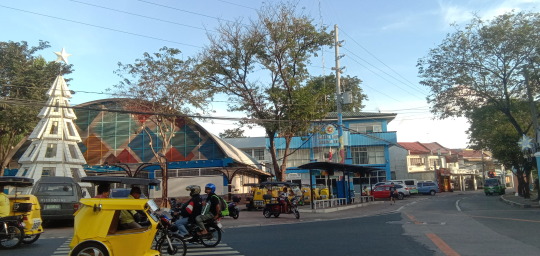
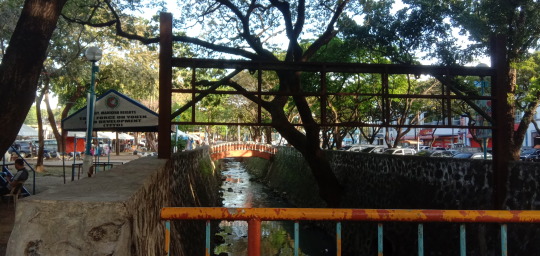
Sec. Bernard stated that Marikina Heights is a high place which means there’s a minimal chance of flood. There are only few places here that are in danger when it floods. The ones who are near the creek. But quickly disappears. Even though we barely experience this kinds of calamities, Marikina Heights is always ready.

Marikina Heights is one of the barangays that help out other places when calamities hit. In Marikina, flood is a big problem due to the overflow of water coming from the mountains like San Mateo. Barangays like Tumana, Nangka and other barangays that are near the river. Marikina Heights is also ready for The Big One. There are evacuation areas that are already assigned to go to.
The barangay holds a quarterly meeting to remind the people about the happenings around.
Here in Marikina Heights, there are no squatters area around here. This is why the barangay isn’t scared when a calamity hits hard here. There wouldn’t be a big damage around Marikina Heights.

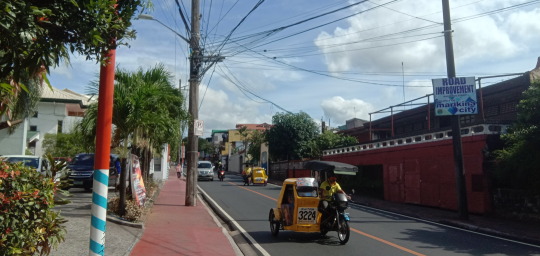
Between East Drive and the St. Scholastica Academy, is where the safety/open area. This is where people should run to when an earthquake hits the barangay. After that, the people will be led to another barangay, Parang, where the evacuation center and relief goods are.




Barangay Marikina Heights has the needs to provide when calamities hit. From first aid kits to rafts, they already have it. Sec. Bernard stated that whenever there’s a storm coming, these rafts are already taken outside and ready to be used to help the people.
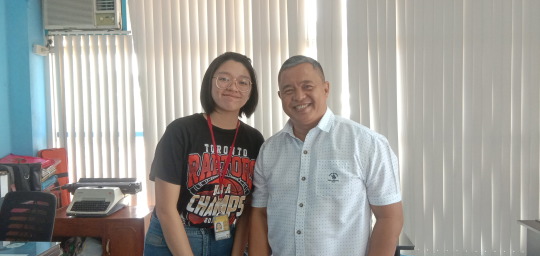
I’ve been living in Marikina Heights for 8 years already and I can tell that our barangay is very reliable. Not only when calamities hit but also when it comes to Peace and Order. They are always in action when the people are in need. They never hesitate to help others and get things done immediately. I am very proud of my barangay and being a Marikenyo.
2 notes
·
View notes
Photo


One of the best practices in Binan is ensuring that there are enough reminders in every zone to go around, especially where inhabitants are mostly kids.
3 notes
·
View notes
Text
“Kwentuhan - UST NSTP”
As part of our prerequisite in our NSTP class, we are tasked to walk and observe our barangay. This was a great opportunity for me to get to know more my community. I reside under the city of Quezon in a barangay of diverse people; locals to foreigners, high-income earners to depressed areas. Holy Spirit, a barangay in the District 2 of Quezon City located on the western side of National Capital Region, is home to an estimated population of 147, 500.

Sadly, at the time, I went in our Barangay Hall, the BDRRM head is not around. So, I interviewed Sir Benjamin B. Berriber, the head of the Barangay Public Safety Officer. Even though, I only get to talk with Sir Ben for a little time, I still felt enlightened about what’s truly happening in our community.

Sir Benjamin B. Berriber, Head of Barangay Public Safety
Hazard Identification
In terms of calamity or hazards that affected our barangay, typhoons and fires are the only dangers. The worst typhoon to hit our barangay was Typhoon Ondoy. During that year, it flooded as some of the areas in Holy Spirit are situated in low places and that there are limited, functioning drainages. Typhoon Yolanda, also hit our barangay but its damages were minimal compared to what happened in 2009 during Ondoy. The barangay officials rely on the weather forecast announced by the Philippine Atmospheric, Geophysical and Astronomical Services Administration (PAGASA) of the Department of Science and Technology (DOST).
Fires are also frequent during summers. Houses in the depressed areas are built side by side having little to no space. Combine the heat during summer and the condition the houses are built fire outbreaks are expected.

Credit: Mark Demayo/ABS-CBN News
Vulnerability, Elements, and People at Risk Assessment
The areas that are most affected by the said hazards are the depressed areas near Luzon Avenue, places situated in low places like Don Antonio, and Holy Spirit Drive near Isidora Hills Subdivision. People living at the mentioned places would be most likely to be affected by different types of calamity or hazards. Due to their living conditions and social economic status, it’s harder for them to cope up with the effects and aftermath of a flood and, especially, a fire. From what Sir Ben said, the safest place in our community is the private subdivisions. There are also basketball court and multipurpose halls that serve as evacuation center.
There are problems that the barangay officials are currently facing. Like I said, due to the living conditions and social economic status of the people near Luzon Avenue, they are forced to steal electricity form other’s power lines which, sometimes, is the cause of a massive fire. Another problem is their incapability to make their place clean and waste-free which clogs up the drainage.

Capacity and Disaster Management Assessment
As what Sir Ben said from our “kwentuhan”, the Barangay Public Safety Officers with the Barangay Chairman do rounds within the community to warn them of the upcoming calamity like typhoon and urge them to evacuate immediately if needed. The barangay also encourages the members of the community to clean up their surroundings.
Sir Ben showed me a handmade “piggy bank” from recycled paper made by women. This is part of the livelihood project made by Councilor Estrella A. Valmocina, wife of the Barangay Chairman Felicito A. Valmocina, to help the families affected by the fire that happened last June.

Hazardous Place
https://drive.google.com/file/d/13HFylMnmVO0g02JcR-hfudeTo6yDaFII/view?usp=sharing
These are the community at the Luzon Avenue. It is the most hazardous place in the barangay due to the people living there. Not to be discriminatory; however, a lot of people are reported to pushing and using drugs in this place. Gun fights also happened. It is not the best place to be alone, especially at night.
Safest Spaces

Compared to the hazardous places in Barangay Holy Spirit, there are numerous safe spaces. For example, Child International. They are an organization focused on helping children to end the cycle of poverty.

Best Practices
As the saying goes, “Safety First.” The best practice my barangay does is having its own Fire Station and BDRRMC Building near the areas that are easily affected by calamities. This makes their operation efficient. The barangay have two firetrucks and one ambulance.



With all of this information laid out, I’m amazed at how my barangay handles calamities and hazards that may intimate others. The barangay officials, of course with the help of the members of the community, works efficiently to ensure the safety of our barangay, Holy Spirit! This encourages me to volunteer and contribute to the barangay.
Ma. Rei Abigail P. Eblamo
C-COM-2 | CI2RUS
Barangay Holy Spirit
UST NSTP
2 notes
·
View notes
Photo

December 21, 2019 | It has been almost five months since I started living in the metro. It was also just recently that I have learned what barangay I am in along the street of Dapitan. As a 19-year-old girl who has lived her entire life in the province, I got carried away with the tall buildings of Manila and how awake and alive the people here are even at past 2 o’clock in the morning - something that is not the reality in my province.
A few weeks back, there were news about the kidnapping scenes which involved white vans that made me question myself Is it really safe here in Manila? Am I safe here?. But then I realized there are other causes which might get my safety much more compromised such as environmental hazards. Let’s learn more about how prepared Brgy. 471 of Sampaloc, Manila against disasters.
1 note
·
View note
Text
Module 3


On December 13, 2019, my father and I walked to the Barangay Hall of Barangay 164, intending to arrange an appointment with the Barangay Captain for the Barangay Disaster Risk Reduction and Management Kwentuhan. When we arrived at the Barangay Hall, however, I was pleasantly surprised to find that I did not need to set an appointment, as two Kagawads were present and ready to entertain any questions that I might have. Without hesitation, I initiated our BDRRM Kwentuhan, and I was happy to hear what they had to say. Pictured above are 1st Kagawad Alfredo Dela Cruz (left), and 7th Kagawad Virgilio Nicolas (right), during our kwentuhan and after our kwentuhan.
From our kwentuhan, I learned numerous things about our barangay and the efforts that our local barangay officials are exerting toward better disaster risk reduction and management. I will admit that at first, I was skeptical that the barangay was even doing anything for DRRM in the local community, and even worried that there is inaction in the community. As the kwentuhan proceeded, however, I learned that the barangay is well-prepared and well-equipped for handling the hazards that the community is most susceptible to. This activity opened my eyes to see how lucky I and the members of my community are to have a barangay that is thorough and meticulous in its DRRM efforts.

Barangay 164 is a small community bounded by the Tullahan River, which runs along the boundary of Caloocan City (where Barangay 164 is) and Valenzuela City (to the north). To the south and to the west of the barangay lies the boundary between Caloocan City and Quezon City. Kgwd. Dela Cruz explained that because of this geography of the barangay, the community is most susceptible to the hazard of flooding, which occurs when the water level of the Tullahan River rises beyond the critical level because of strong monsoon rains (Habagat) and tropical storms or typhoons. Of the residents of Barangay 164, households along Road 1, Road 5, and the Pasong Mapalad compound are the most susceptible to flooding hazard because of their proximity to the river.
Recently, however, the Tullahan River has not flooded because of a general lack of strong rainfall. Typhoon Tisoy was not strong enough to cause the water level in the river to rise above the critical level, and the last time that the Tullahan River flooded the community was a few years ago because of Habagat, and Ondoy before that.
The barangay’s efforts in implementing early and preemptive evacuations, as well as early warning alert systems have prevented casualties and deaths in the event of Tullahan River’s overflowing. This, in addition to their relocation efforts for residents of Pasong Mapalad, as well as the building of a retaining wall around Tullahan River in cooperation with the Department of Public Works and Highways (DPWH) has greatly reduced the barangay’s vulnerability to a flooding hazard, as everywhere else in the barangay is inland and on higher ground than the river’s level. Strictly speaking, the safest place to be in during a hazard is in the safety of home (aside from residents of Road 1 and 5, and Pasong Mapalad) and the local school (Talipapa High School). This puts the barangay at low risk of the occurrence of a disaster arising from a flooding hazard.
Aside from this, the barangay is also prepared to respond to the aftermath of storm and flooding hazards, as the barangay is equipped with generators for when power goes out in the evacuation center (the local school) and tents for families who are evacuated. Additionally, a mobile vehicle equipped with medical supplies for first aiders and a mobile vehicle for food are also present in the event of an evacuation, preemptive or not. The barangay also has a rescue vehicle, and even rescue canoes or “bangka” to rescue and salvage people or belongings swept along by a flood.
Pictured below are Tullahan River along the length of Road 5, and Talipapa High School. We identified these to be the most vulnerable place, and the safest place in the community respectively during our community walk. The bridge is especially close to the river, and sudden surges in level expose this area to danger. Meanwhile, Talipapa High School has a large empty space which can be used for evacuations.


Pictured below is our residence, which is considerably safe because of its location and also because of its construction of concrete and thick steel beams, although again, realistically, any house in the community is safe as long as it is not on a street bounded by the Tullahan River.

Based from these observations, it is plain to see that my local barangay has a very high capacity for dealing with hazards, for preventing these hazards from turning into disasters, and responding accordingly after these disasters or hazards have passed. Most concerns that are issues in other communities are non-issues in my barangay because of the hard work of our local officials. The only identifiable issue that stands out to me as jarring is the lack of preparation for a big earthquake and the lack of promotion and awareness campaigns, and even drills for such a hazard.
Besides this, another issue that is identifiable is the voluntariness of the evacuations for flooding hazard. Despite their best efforts, the barangay still has troubles getting evacuation rates for the pertinent vulnerable areas in the community up to 100% because some residents do not sufficiently understand the danger or the harm of a given hazard.
These issues are easily solved simply through the arrangement of seminars, drills, and awareness campaigns by the barangay which will involve the concerned individuals and families, as well as the community at large to encourage more efficient evacuation and awareness within the community.
As I think about these activities and what I’ve learned from them, I realize just how lucky my community is in comparison to the rest of the nation. While we have a high capacity to prepare for, and to handle and cope with passing hazards, many other less fortunate barangays and communities in the country do not. Barangay 164 is an exception, and the disaster situation in the Philippines is not any better for it. The Philippines suffers too much and experiences disasters which can be prevented through proper action too frequently. That many people’s lives are lost to natural hazards every year is testament to this. That every year, much economic loss is incurred due to natural hazards is testament to this. And so, I realize that I must be thankful for my community’s good position, but I also realize that I must work so that all communities may be just like mine.
We need to address the disaster situation in the country as this is one of the challenges that the country faces before it can achieve sustainable growth, and before it can progress. As citizens, we can do this by remaining vigilant, and knowing what to expect and look for in our government officials who are in charge of their units’ DRRM efforts. By increasing awareness within the citizenry, more pressure is put on our government to remain competent with regard to DRRM. Therefore, as a student, one of the concrete ways that I can begin to help addressing the country’s and my local community’s vulnerabilities is to stay vigilant, and to stay open to communicating concerns about perceived vulnerabilities in the community to my local community’s officials. In truth, by doing this module, I am already taking part in the solution to address vulnerabilities and increase capacities of my local community by bringing to light concerns that need addressing. Therefore, one of the things that I can do to improve capacity in my local community is by bringing my experience from modules 3 and 4 to my local barangay hall in continuing the dialogue which has already been established.
In conclusion, each individual is responsible for community safety, and our voices and vigilance is key to making sure that less and less people are hurt by natural disasters. By remaining vigilant to the efforts of our local government, and by simply being aware of the most basic concepts of DRRM, we are already helping our community and our nation, even if it is in a small way.
1 note
·
View note
Text
NSTP L-SCI-2
Welcome to my blog, my name is Joseph Luis H. Torne from the UST College of Science, Bachelor of Science in Applied Physics. I am here presenting my interview in the previous barangay that I was a part of.
Here, we will find out how a barangary operates before, during, and after a calamity has struck as well as some of the inner workings of the barangay.
The following shall be observed:
1. Hazard Identification - How does the barangay identify a hazard that has a potential to be a calamity and how great it affects the barangay as a whole
2. Vulnerability - In what aspects, areas, and people are vulnerabile to a particular hazard.
3. Disaster Management - During and Before a calamity, how does the barangay fare and how they will recover from the recent calamity
First of all the georaphic area, Barangay San Pedro, in the town of Bustos, in the province of Bulacan, is located near the Angat River, making it susceptible to flooding during rainy seasons. The low-lying areas of the barangay, in particular those who are near the riverbank are the ones who are most affected and in danger.
Incidentally, the recent strike of the ASF (African Swine Fever) greatly become a huge crisis, the overall economy was affected. Region 3 is the most affected, and Bulacan being in this region was affected. Most swine businesses are mlocated in the Provinces of Bulacan and Pampanga and the spread of the ASF was rapid.
Due to this, there a hazard which may potentially damage humam lives. In Bustos, there was a mandatory surrender of all swine, compensating those who surrendered with P3,000 per swine. These swines are immediately killed and corpses burned, due to the mass burial of these corpses they could be found almost anywhere in the remote areas of the barangay, especially the river. Due to this, there was potential contamination of the water and the barangay immediately responded to the rising crisis.
1 note
·
View note
Text
Preparar!
“Preparar”, a term that I, as a kid who grew up in an environment with people talking using their mother-tongue - Hiligaynon, usually hear at home. It is a word that we, Filipinos, adopted from the Spanish language, which simply means “Be Prepared”. University of Santo Tomas was founded by Miguel de Benavides, a Spaniard sinologist who was the third archbishop of Manila. UST, is located in España, Blvd, Manila. And around España, we can find Dapitan St. Where we conducted our interview about the hazards, vulnerabilities and preparation that the barangay encounters and prepares for.
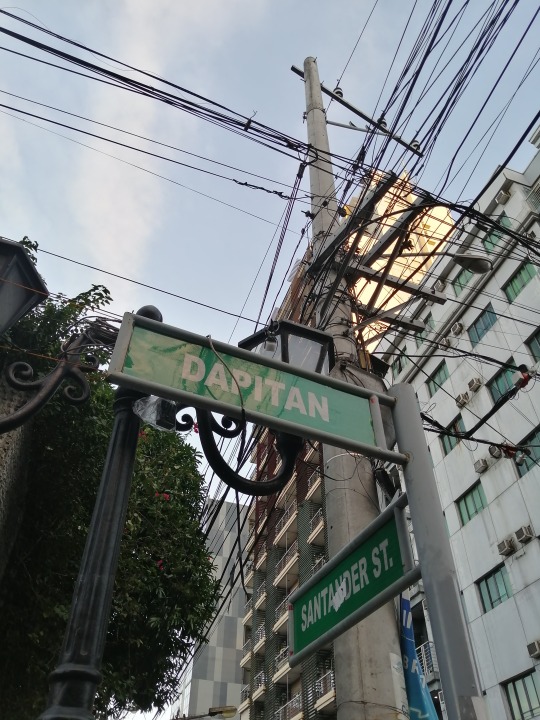
Along Dapitan St. lies the barangay hall of Barangay 471, Zone 46 District IV of Sampaloc, Manila. According to Kgd. Alfonso, the only barangay official to be found during that time, Barangay 471 is just one of the 192 barangays located in Sampaloc, Manila. The barangay officials sees to it that they are well educated and trained of handling disasters that might occur,for within the vicinity lies countless number of dormitories and condominiums

wherein students live because of its accessibility to schools, colleges and universities, which one of those is the University of Santo Tomas, University of Perpetual Help, and many others.
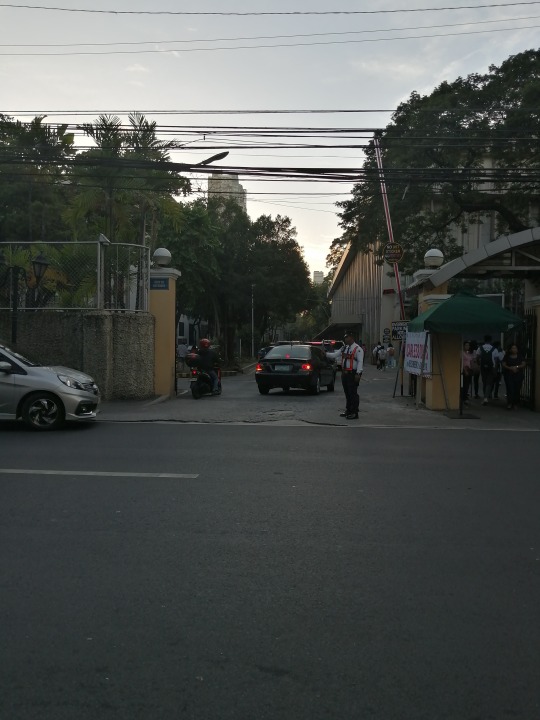
“KWENTUHAN”
As what was said by Kgd. Alfonso, the hazard which are most likely to happen in this area are earthquake and typhoon. Among the two, typhoon is considered to be the most expected catastrophe to leave a devastation in the community, because of the rapid increase in water level during rainy seasons that results to flood. What the barangay does to prepare for these events is the monitoring, controlling and evaluating the people and the factors that affect the situations. But nevertheless, they are not focusing on making preparation on a single disaster. Just last February 2019, they conducted an emergency drill, namely for an earthquake phenomenon, within the community. This drill included the barangay officials, as this aims to make the constituents feel and know what to do during a certain event.
It is most likely to be known that there is an upcoming disaster through the announcements made by either PAG-ASA or NDRRMC. The barangay also reinforced a guide to be followed during emergency situations. One of which is the implementation of an alarm by ringing a bell or a buzzer that will call out the attention of the community to have them act accordingly.
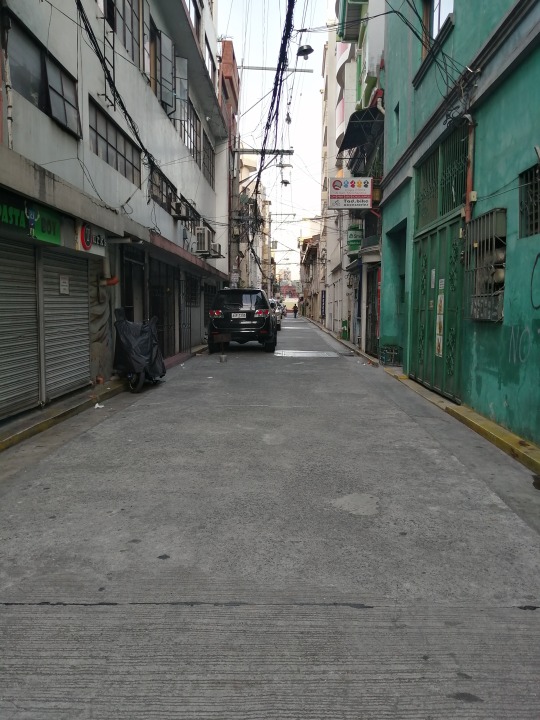
Manila is located near the west valley fault. If there will be a disturbance found in the fault line, around 35-40 thousand people who are staying in Manila are estimated to be the number of casualties. For the past years, we have already experienced tough situations during and after a phenomenon has occurred. It is really very hard for the people, especially the ones with businesses, to deal with losses because of the damage that the catastrophe brought. The location of the whole Manila is a low-lying area that makes it hard for the barangay to determine and provide an easy access for the people to evacuate on, during emergencies, most especially during typhoons. The only safe place during this disaster is your own home. But in contrast with this, the number of hazardous places is innumerable since there are no proper drainage system to get rid of the rapid accumulation of water if so typhoon occurs, and no open are to immediately run to during an earthquake.
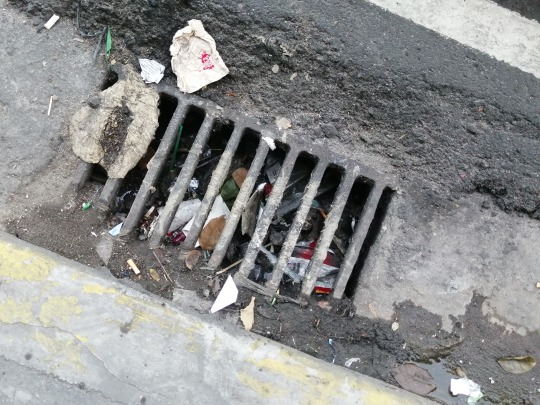
The lack of attention that the government is supposed to give them is one of the troubles that the community is experiencing. The government is lacking on giving them funds for them to put up better projects in preparation for these disasters. Another trouble that the community needs to give attention on is the traffic congestion that may build up due to the narrow spaces that the barangay has. Most of the streets are crowded because of the cars parked beside and on the road itself. If there will be medical rescuers coming, a lot of people will surely go awry. That will cause the delay of emergency medication and might cause traffic congestion because of too much crowd scuffling to get treatment. And if so ever that an aftershock causes a building to collapse, the vehicles parked along the road will be damaged, it will cause danger because of unlikely disaster that it might bring such as fire, broken glass, and others that could delay mode of evacuation.

“Community Walk”
Walking around the area I found out that there are a lot of tall buildings that are built within the radius of the barangay. This increases the potentiality of risks because of the decreasing rate of strength due to the fact that the streets are narrow and tight, that gives less spaces that each street could offer after everyone has gone out of their homes during evacuation. If ever an earthquake occurs, even if everyone had gone out safely from their homes, there is still a larger possibility that they could still be experiencing devastation. In the situation such as that if the buildings near them collapses, because of the tight narrow roads outdoors, people will still have a low rate of survival opportunities.
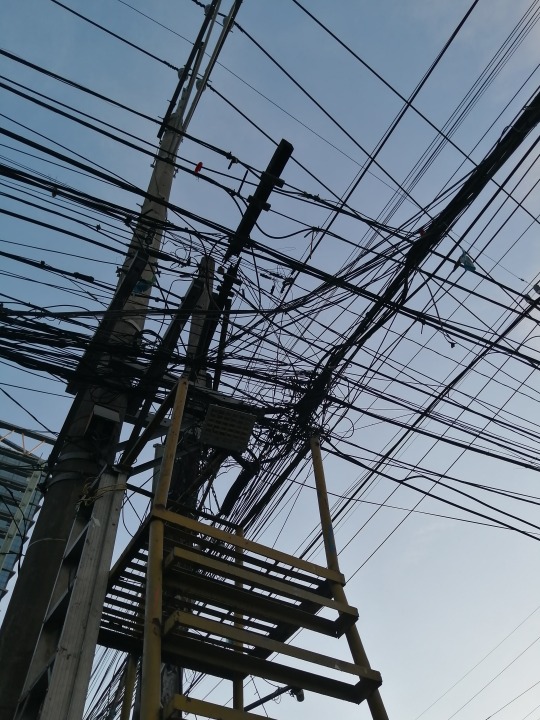
I also noticed that electric wires are lowly hanging just a few feet above a person. This is hazardous because it defies the safety of a by passer. Aside from this, electricity wires are also improperly clustered over the other. Waste is also improperly disposed.
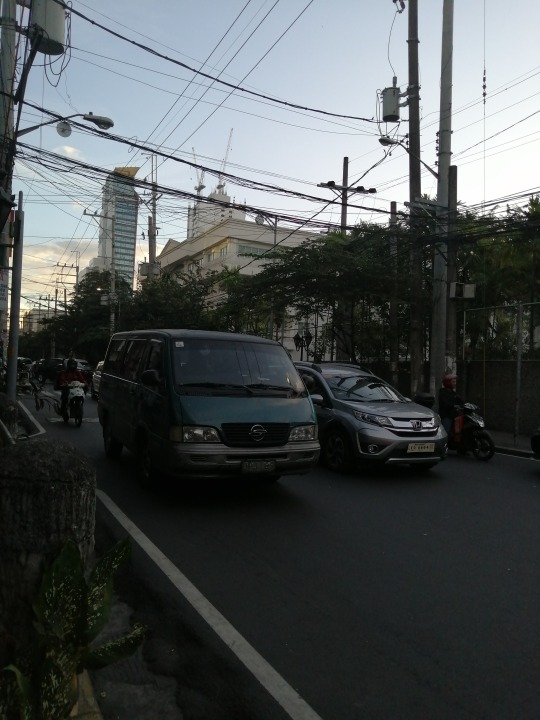
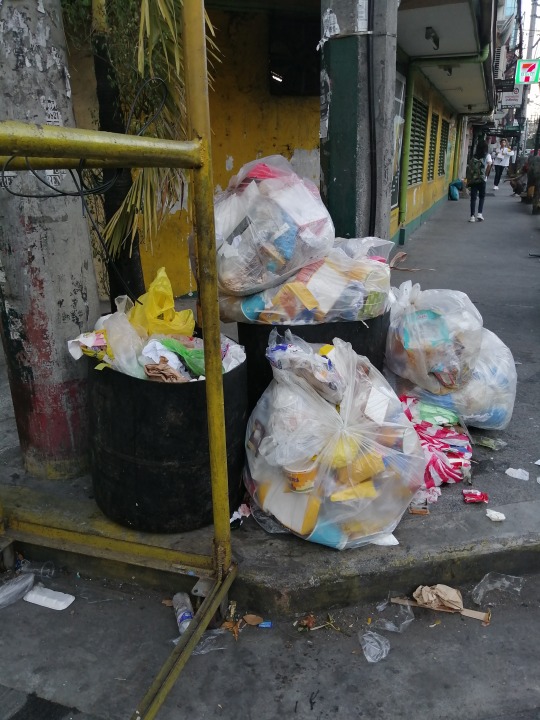
“Reflection”
The hazards that are most expected to occur were identified as either typhoon or earthquake. There could be a high risk of casualties because of the imbalance of the number of population and their route to escape in an emergency case. The houses that are being resided by the common residents of the barangay are compressed and contiguous that lessens one’s ability to exit freely and quickly.
“Preparar” is a Spanish term for “Prepare” or “Be Prepared”, and indeed no one could ever be safer than those who prepare. Despite the evident vulnerabilities in the community, preparations should not be disregarded. True enough, it is better safe than sorry.
1 note
·
View note
Text
Module 3
DRRM Kwentuhan
I went to the nearest barangay hall in our area to know more about the current disaster situation, preparedness and management. I was given the opportunity to interview Kgd. Edgar O. Estigoy, who is responsible for the Committee on Disaster.
According to Kgd. Estigoy, the hazards the area often experience are flood and earthquake. Flood is the most common hazard, though it quickly subsides because of the drainage system in the area, which proved to be very effective.
He also mentioned that information dissemination is made easy because of technology. Nowadays, radio and cellphones are very accessible. And with the present technology, national agencies like MMDA, Maynilad, Meralco, and the like are able to assist and alert people through simple text messages.
In this area, majority of the houses are not prone to destruction because of two reasons: urbanization and concrete materials. Urbanization is evident because of the tall buildings, which prevent the residences from fully experiencing the disasters. Aside from the tall buildings, the other houses are made out of concrete materials, except the three houses which are made out of wood. These three houses are located in Moret St., Galicia St., and in Tolentino St., which will soon be demolished to prevent any causalities to its residences.
With its frequent checkup and maintenance, the area is less prone to experiencing the consequences brought about by disasters and hazards. Yet, it is inevitable for the residences to be affected, especially the people who lives in houses that are only made of wood. Majority of the people live in this area because it is a convenient place to earn money, and if disasters happen, their businesses are affected. Some might lose their house, their business, and even opportunities.
If disasters occur, the barangay hall remains open for everyone because the building is made out of concrete materials, and tall buildings are also used as an evacuation center. He added that there are tools like volt cutter (which is used when a victim is stuck in between objects), saw (for cutting wood), electric drill, rope, and first aid. PWDs, elderly people, and pregnant women are assisted and prioritized by people who are knowledgeable and experienced in this field of work.
As a student, this interview was very helpful because it gave me an overview of the current disaster situation, preparedness and management of our area. This allows me to see what is improved and what should be improved, which is important in planning and organizing future projects and events for the benefit of the community. It is important that we should know and experience the situation beforehand to be able to conduct an effective solution to the problem.
Interview:

Hazardous Places:

Wastes

Houses made of wood

Unfinished construction site
Safest Places:

Barangay hall
Best Practices:

Recyclable waste bin
1 note
·
View note
Text
Barangay Bahay Toro, a DRRM Evaluation

[ Brgy. Bahay Toro, Q.C. Hall ]

[ Bahay Toro’s Vicinity Map ]
2019, December 6 – I got the opportunity to visit my barangay, Bahay Toro, to interview the barangay official in-charge of the Barangay Disaster Risk Reduction Management (BDRRM) Plan.
He is none other than Hon. Dennis A. Caboboy, our Barangay Chairman.

[ Me with Sir Caboboy ; © Maximus Ama ]
For someone who is 10 minutes away from her barangay, I have to say, I’m not familiar with how the they handle the calamities we face every year. Thanks to this activity, I was able to take a closer look at our barangay’s actions toward managing risks.
According to Mr. Caboboy, the disasters that mostly occur at our barangay are fires for man-made hazards, and floods, flash floods, and typhoons for naturally occurring hazards, typical for the Philippines. He also mentioned drugs as one of the dangers that adversely affect our community, which I didn’t think of being possible in our area because it’s not as noticeable as the others. They know when an imminent disaster will strike through the information they receive from the Philippine Atmospheric, Geophysical and Astronomical Services Administration (PAGASA) and the local government, which they mostly disseminate to areas without access to such information, such as the people near the creak. They warn the people so they would transfer to a different area while it is still early as they are the ones who would be mostly affected when disasters hit. Also, he mentioned that they communicate with the Planning and Policy Studies Office (PPSO) whenever they see people selling firecrackers to prevent any catastrophes to take place.
It was nice knowing that the barangay officials take the time and the risk to go to the creeks to warn people about the imminent dangers. The reason for that is because I’ve dealt with a few due to commuting. While some are minding their own business, some would try to scare you. Even though they could’ve gotten to know these people in a personal level because of the frequency of times they’ve seen each other for the warnings, I still think they’re brave because we don’t know the circumstance.
I’m also glad the barangay shares the same values as me when it comes to firecrackers. Sure, they bring joy to special occasions, but they take more lives than those they lighten up. During occasions, instead of rejoicing, all happiness is taken when these explosives have been set off and harmed our loved ones.
In terms of the vulnerability assessment, it’s not shocking to hear that the informal settlers are the ones who mostly experience the disasters because of their illegal electricity connections, causing explosions. Even for floods, they occur there too because they choose the areas near the creek. However, subdivisions rarely experience heavy damage because of Disaster Risk Reduction Management (DRRM). Other than death being one of the effects of the disasters amongst the people, those who own a ‘tindahan’ could lose their source of income because they could be destroyed through floods and fires. According to Mr. Caboboy, those affected would be provided with medical supplies for one week and they will be relocated to the barangay’s court, the safest place in the barangay, for a month. Barangay officials would talk to Non-Governmental Organizations (NGOs), Department of Social Welfare and Development (DSWD), and to various subdivisions to ask for donations in order to speed up the process of recovery. Although the officials make tremendous efforts, those who are stubborn the rules hinder the development of the community and preventing the recovery from disaster strikes.

[ Brgy. Bahay Toro court ; © Mika Ebio ]

[ Flood Prone and Fire Prone Areas ]
To prepare for incoming dangers, Barangay Bahay Toro conducts regular seminars about fire prevention and disaster preparedness. To aid the people of the barangay in their road to recovery from the impact of the disaster, they conduct livelihood seminars on how to earn money or get a job, and a seminar about a coordination with Technical Education and Skills Development Authority (TESDA). In addition, they have a group of people who assist those who were affected by disasters. Also, they have funds aside for the materials in terms of disaster preparedness, as any barangay should have. There are members or ‘kagawads’ assigned to a committee, but sadly, the paper with the list of barangay officials did not indicate which committee they are a part of.

[ Barangay Bahay Toro Officials ]
During our little walk at the barangay, we were able to identify other hazardous places that are not included in the picture about the flood prone and fire prone areas,

[ Top view showing the distance between an elevated platform to the group ]

[ A “No Parking” sign blocking our way to the office ]

[ Uncut branches of a tree ]

[ Cracked cement ground ]
a safe space,

[ Brgy. Bahay Toro court ; © Mika Ebio ]
and best practice.

[ “Slow down” painted on the ground as a safety reminder ]
After the interview and community walk, I realized that I truly lack the knowledge about my how my community deals with DRRM. To be someone who wants the world to be a better place, it is important to start in our communities first. To be a leader, it is not just being responsible enough to know your duties, but it is also about having the courage to stand up for what you believe in when others threaten your belief, for example, the firecrackers situation. We need to address these disasters in our country because there are more generations to follow – we would not want to pass this type of situation to them as a burden. We are part of what caused it to be worse due to our own stubbornness to follow rules, like the banning of single-use plastics. Therefore, it is our responsibility.
To address these situations, I believe that being active members of the community is a vital role we should ALL be playing. If you’re of legal age, it is your duty to vote to elect the officials you think would serve not just our country or community’s people, but do actually have the purest of intentions to properly implement rules and programs, such as the DRRM. Simple acts such as picking up the trash, using eco bags instead of single-use plastics, and using bamboo straws instead of metallic ones as they’re not biodegradable or even plastic ones as they endanger our ecosystem for their poor degradation rate and animals mistakenly ingesting them could go a long way.

[ After interview w/ Hon. Dennis A. Caboboy & Mika Ebio; © Maximus Ama ]
#drrm#disaster risk reduction management#barangay module#nstp#cwts#ust#barangay#disaster#risks#management
1 note
·
View note
Text
DRRM: Brgy. Sangandaan, Proj. 8, Q.C., LAGING HANDA!
As a freshman in the University of Santo Tomas, we are required to take up this course called NSTP (National Service and Training Program), and we’re currently focusing on what we call DRRM (Disaster Risk and Reduction Management). So what are all these and what do we do? Basically, we learn and get to know more about the different communities in the country, and how we can do our part and contribute to the overall well-being, happiness, and safety of the people who live in it. DRRM is grounded and focuses on four thematic areas: Disaster Prevention and mitigation, Disaster Preparedness, Disaster Response, and Disaster Rehabilitation and Recovery.
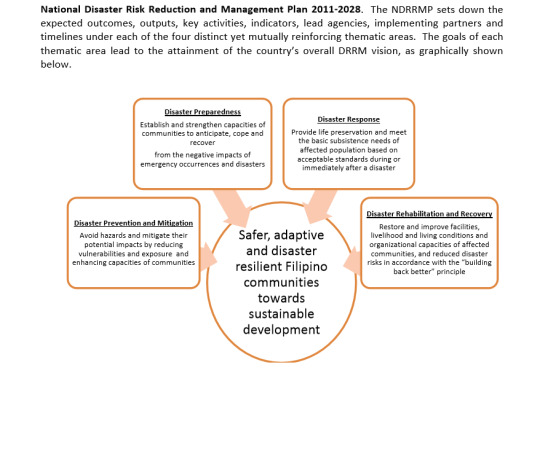
For the past 7 years that I’ve lived in the humble and thriving community of Brgy. Sangandaan, I’ve never had the chance to interact with the people who worked in the barangay hall or office. And now, I’ve recently had the chance to have a walk and “kwentuhan” with one of the local head persons of our barangay’s DRRM: Sir Fidel Nisperos.
December 9, 2019, I visited the brgy. hall. All of the staff and workers who were there were very patient, kind and accommodating. And as I was waiting for Sir Nisperos, I was able to observe that the place has a very happy and healthy working environment, and all seemed very close to one another. This even brought a smile to my face.
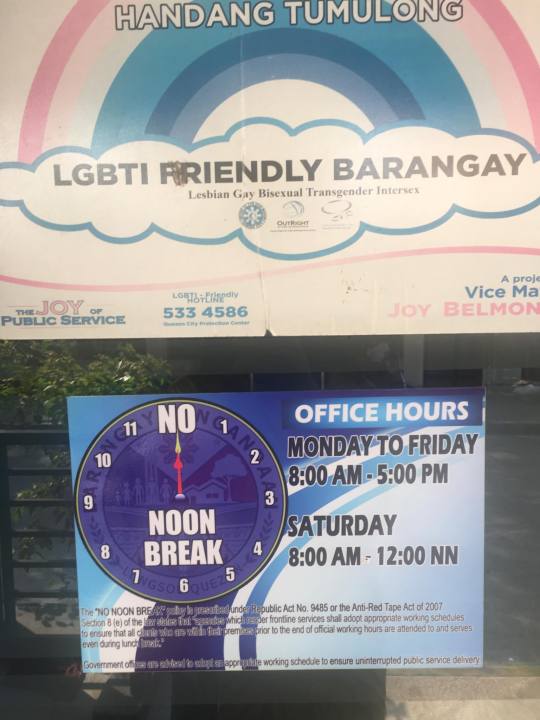
Sir Fidel was kind enough to accommodate an interview with me even without prior schedule or notice. He enlightened me and shared with me almost entirely everything I needed to know about our barangay’s DRRM.
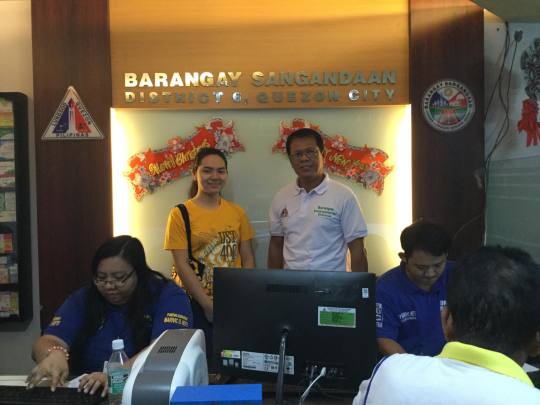
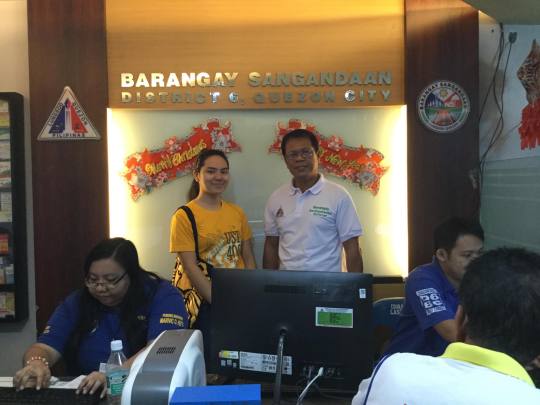
We first identified and analyzed the hazards, calamities, dangers, that may affect and disturb the peace and safety of the community. Sir mentioned a few specific incidents and calamities that have already occurred: in 2012, a large fire spread across 100 homes affecting around 200 families; in Bagyong Ondoy the floods were so great that it surpassed the height of an average Filipino and the height of three-story townhouses. We are now preparing for “the Big One”.
So how does DRRM prepare for this? To identify a nearing threat, they always stay updated with the weather forecast. They often hold earthquake drills (quarterly) in areas like the Savemore supermarket (Project 8) and the Villagers Montessori, because these are the places where a lot of people mostly gather. They are always alert and standing by, since the Blue ridge, Libis in Q.C. is the nearest fault line to us. Their evacuation emergency plan for any kind of calamity, is to escort people to the designated evacuation centers, namely: first plan is at the Mendoza covered court, then Ismael Mathay Sr. High school, since both are of the highest places in the district, and there are a lot of buildings. If ever it is too full, next is to evacuate to the church beside the Brgy. Hall, the Immaculate Conception Church. Last resort is to the private village, Paradise Village’s covered court (given their consent).
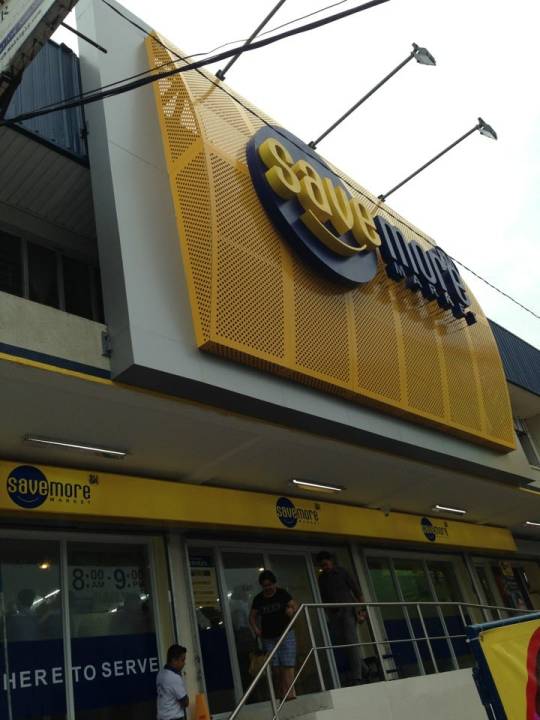
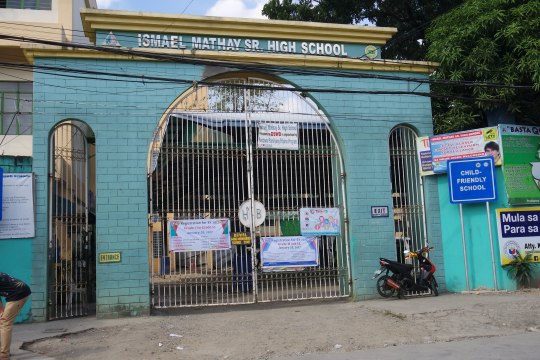
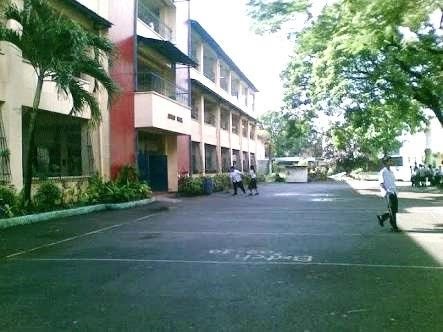
When it comes to mitigation, He said that they first look back at the previous incidents and what may have caused things to happen, and what may have gone wrong. As for instance, during Bagyong Ondoy, there wasn’t enough mitigation for it, and since then, the government has been continuously cooperating with the different districts to ensure that everyone is prepared. They also conduct inspections of hazards, such as large trees that may cause harm to people and houses next to them, so they eventually have to cut these trees down. They also frequently de-clog the sewers, and provide dissemination programs on proper cleaning of the home and environment to avoid illnesses and viruses such as Dengue, and hygiene programs.
We took a little walk around, this when we talked about the Depressed areas and the Informal settlers who live by the river and underneath the bridge. He said it to be one of their main concerns for a number of reasons: they are one of the main causes of the river’s pollution; it is dangerous to live underneath the bridge and beside the river, since one can easily fall into the river, or during storms, floods may easily surge them due to its overflow; they are the poorest in the society, therefore they don’t have the right drainage and septic tanks that enable them to avoid floods; since they are the ones usually most affected during calamities, most of the funds for financial assistance goes to them. At this moment they are still waiting for the government’s approval and provision for them to be relocated, and they are continuously encouraging them to consider this. This has to be one of the most hazardous places. Another is that there are a lot of stray dogs by the route I pass towards home, and two or three times they’ve already barked or threatened me (but didn’t harm me thankfully).
One of the safest spaces in the barangay has to be the area within the Brgy. Hall, beside it the Church and beside the Church is the Health Center. Having these three geographically close to one another gives (if not all, to me personally) a sense of security, safety, ensurance, and community. Personally based on my observation, one of the best practices my community has is cleanliness. I walk from place to place around the barangay very often, and I have hardly seen any trash such as wrappers or plastics lying around.
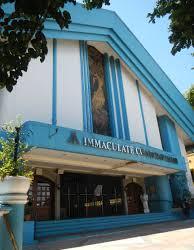
In addition to these, I asked Sir Nispenos about the specific and various programs for the PWD, elderly, and the youth. For the Pwd, they have a list and record of them so that they’d know who to prioritize. For the Senior Citizens, they do their best to screen and identify the senior citizen indigents so that the people who first get the government pensions are those who really need it. And lastly for the Youth, there are life training programs, especially for those out of school, such as welding, automobile, call centers, sewing and dressmaking, cosmetology, etc. For those who wish to study, there are several scholarships offered, supported by the government and the diocese of Cubao.
Personal insights
I think one of our main issues and concerns in our community is poverty. This has been the most obvious yet unresolved and dominating issue in our country, and I can see it clearly everyday as I pass by the bridge where the informal settlers live. Based on my own knowledge on politics and government programs, support and services, I think the government should focus on helping these informal settlers both find a proper home, and gain a sustainable way of earning money and making a living. The government should support them in a way that sometime in the near future they are then able to eventually support themselves. As Sir Fispenos said, most of the funds go to them since they are always the most affected, due to lack of resources, nd the lack of resources come from lack of sustainable jobs and income. Therefore, the cycle goes all over again. The allocation of our budget tends to be quite messy at times, but then again there are a lot of issues and concerns that need focus and I hope the government recognizes this. I simply realized how blessed I am to be able to live a comfortable life. I am thankful for the everyday blessings of having a happy and complete family, a religious community and a solid group of friends who are always there to support me, a roof over my head, having food to eat three or more times a day, studying in a prestigious university, and knowing and having a deep relationship with God. These things I try not to take for granted every day, and I eventually realize that everyone, every single child of God deserves to be loved and to be blessed with happiness and peace, all the days of their lives. That’s why we must in return share these blessings given to us. It is important to be socially aware of these issues and kinds of things, because it strengthens our sense of community, and helps us empathize more with the people around us. One concrete way is to be more active in social development programs, like me not only in NSTP, but in my religious org. wherein I am able to reach out to different kinds of people at different states of life. One suggested way is to also create my own action plan, so that I am able to openly share my personal thoughts and takes on an issue then it may eventually contribute to the greater good.
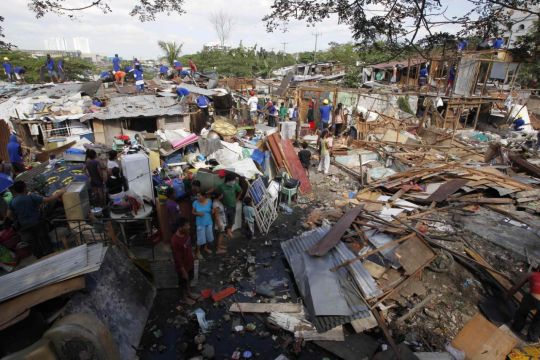
Sources: https://sites.google.com/site/ismaelmathaysrhsqcsecondary/history-1 , https://www.google.com/url?sa=i&rct=j&q=&esrc=s&source=images&cd=&cad=rja&uact=8&ved=2ahUKEwiso6Ol1LDmAhVT8XMBHWAvBicQjhx6BAgBEAI&url=https%3A%2F%2Fcommons.wikimedia.org%2Fwiki%2FFile%3A03102jfBarangays_Church_Conception_Talipapa_Sangandaan_Quezon_Cityfvf_04.jpg&psig=AOvVaw1vBG8_kcajqoUVAgsGs0oZ&ust=1576258930208586 , https://foursquare.com/v/savemore-project-8/51511425e4b0fe2bab60f58d?openPhotoId=51a6d80d498e1575af11bb58 https://www.bing.com/images/search?view=detailV2&ccid=17vSFTAP&id=EF31C8E734D970C54EA5A64AF405583ECDB67CDE&thid=OIP.17vSFTAPBzCazaZNrBltdwHaE7&mediaurl=https%3A%2F%2Fs.yimg.com%2Fny%2Fapi%2Fres%2F1.2%2F3xRorRyaPJ4VHMsZbVPUcg--%2FYXBwaWQ9aGlnaGxhbmRlcjtzbT0xO3c9MTI4MDtoPTk2MDtpbD1wbGFuZQ--%2Fhttp%3A%2F%2Fmedia.zenfs.com%2Fen_us%2FNews%2FReuters%2F2014-01-28T083908Z_1069901473_GM1EA1S1A3P01_RTRMADP_3_PHILIPPINES.JPG.cf.jpg&exph=853&expw=1280&q=poverty+quezon+city&simid=608007690116796036&selectedindex=1&ajaxhist=0&vt=0&sim=11
http://ndrrmc.gov.ph/attachments/article/41/NDRRM_Plan_2011-2028.pdf
1 note
·
View note
Text
UST NSTP MODULE 3
CAYLA LOPEZ
C-CRS/CTHM
MS. MARIANNE DOMINGO (FACILITATOR)
1 note
·
View note
Text
Barangay Karuhatan: Disaster Risk Reduction and Management
During November 4, 2019, I, Juan Miguel Polloso, from the L-IICS-1 class scheduled to visit the Barangay of Karuhatan as a partial fulfillment course in my UST NSTP course which required students to interview a DRRM official about issues regarding the community’s strategy and plans when it comes to natural and man-made disasters. The interview was a magnificent learning experience, and it gave me a generally excellent point of being able to pinpoint safe and dangerous spaces, a good way to deal with the probability of a hazard to become a disaster to decrease and the embodiment of the DRRM council.
Barangay Karuhatan

I was blessed to have Sir Jose Liberato Duenas, the DRRM coordinator in the Nurse Emergency Department of Valenzuela Medical Center just beside the Barangay Hall of Karuhatan, to be interviewed on how they manage different types of crisis including the most recent Typhoon “Tisoy” especially when they handle patients of the hospital. When I visited, I noticed the barangay hall, medical hospital, fire station, and 3s center were near and all beside each other.
Valenzuela Medical Center

The Interview

During the interview, disasters that mostly affect the community are always typhoons as the Philippines have an average of 20 typhoons per year. Some of the worst disasters with natural causes or man-made causes that would be very difficult to apprehend for the safety of the community if it were to happen, would include earthquakes, fires, landslides, and possible terrorist attacks. They also mitigate every way possible like volcanic eruptions because even if we are far from volcanoes, Pinatubo’s ashfall incident shows that distance can’t be a scope of determining safety.
They identify hazards by using communication through fellow barangays and as to when a hazard that can reach dangerous levels is becoming a disaster, they use preparedly built vehicles and through early warning devices like painted water levels in electric posts they can know when it will become dangerous. They prepare by strategizing to refer according to the storm warning signals announced by PAGASA or the city government’s plan and fellow barangays. A lot of pharmacies, hospitals, police stations, fire stations are also on standby in case an unexpected disaster occurs.
It depends on the disaster on which areas can be affected heavily by the disaster itself. For example, low-lying areas are heavily affected by typhoons, earthquakes heavily affect high-rise buildings and landslides affect those who live beside mountains or land with unstable soil and many more. The people that can be heavily affected are the old, young, PWD’s and the poor due to their physical or mental disabilities, and some have no knowledge regarding DRRM to protect themselves in impending disasters.
If the worst comes and the barangay considers the occurring disaster a huge threat, they call on forced evacuation in which emergency vehicles siren and announce the people on the surrounding areas to evacuate upon a safe place while rescuing possible persons that require assistance or are already stranded. The disaster can result in affecting mostly the source of living of people in the community, especially farmers as they can have their crops become destroyed and if they don’t get paid for their crops, they will have no money to rehabilitate their farms and would end up asking the local government unit to provide necessary funds and supplies which will make decrease the nation’s emergency funds. The buildings will also deteriorate and will require repair to improve the building’s structure.
3s ALERT Center taken from behind the fence

For the hospital, they evacuate the patients and people at open spaces like the nearest emission or at the backyard of the 3s ALERT Center. The problems that the barangay is currently facing is funding if the barangay couldn’t afford to support the community’s emergency needs they will need emergency help from surrounding barangays and the city government.
He also mentioned that the DRRM council is separated into a national, regional, local governmental, and at the barangay level. The R.A. 10121 also helped strengthen all the DRRM system like how it empowered Bicol’s barangays through training and supplies from the national government because Bicol was a massive target of disasters.
Community Walk
Hazardous Places


Safe Spaces


Best Practices


There are a lot of hazardous, safe, and best practices in the community. Limited protection in construction sites and tangled wires can lead to a lot of accidents, and it affects people without the right DRRM knowledge the worst. Safe spaces may include footbridges and police assistant desk because the main worst disaster that we all know that happens often daily are car accidents and crimes, and they heavily prevent those. Best practices every day that people do is to recycle plastic bottles and preparing emergency vehicles in case of a catastrophic disaster, as we all know plastic is one of the “absolute trash” and disasters can come at any time so we have to always be prepared for it.
As I mentioned before, every community is in need of funds for supplies in case there are hazardous events happening. It is a fact that natural disasters are inevitable, on that note every community should be prepared even in each household. Teaching every barangay through seminars/drills in emergency awareness and preparedness and providing facilities and equipment to help the community can solve this problem.
Every year we always have disastrous typhoons, floods, crimes, and a lot more. Helping raise awareness for every community wouldn’t just help the people near your vicinity but as a whole nation. I learned that every community always tries to find a way to help prepare disasters because if left unhandled, a disaster can destroy the only sole world where we live in.
Disasters have claimed the lives of a lot of people. We must stop more casualties before it finally becomes our turn to suffer. Even it means over-reacting to protect ourselves, being too cautious can always save you to something that can happen unexpectedly.
Through research and observation, we will know what each community needs. For example, if the area is landslide-prone, people living in the vicinity should know when to evacuate or there is a need to relocate. This should be provided by the community leaders.
If you are a student like myself, as people also living in a community, we should provide support even if it is a tiny bit. Simple proper disposal of garbage, joining the barangay cleanup-drive, participating in the fund-raising events of the barangay to boost the community’s capability on emergency preparedness. For this reason, It’s better to always be prepared.
1 note
·
View note